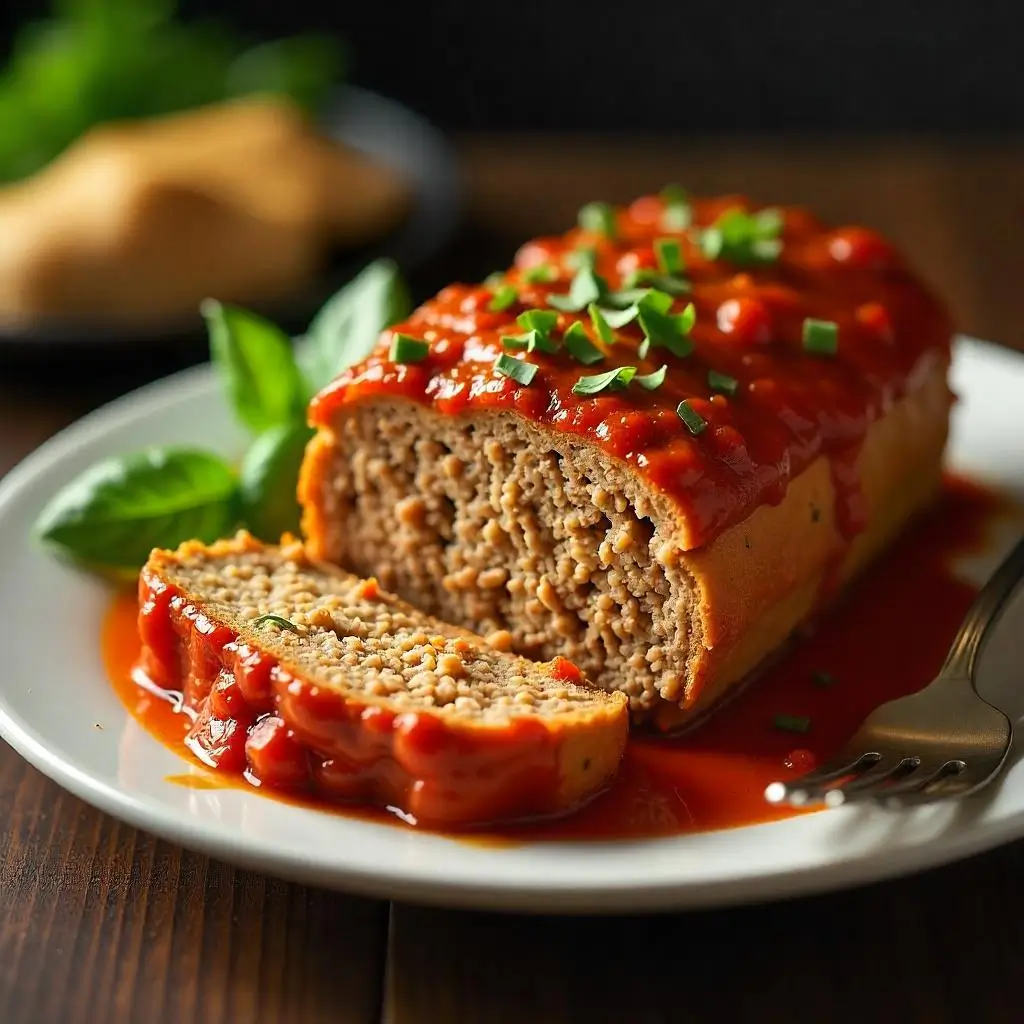When it comes to comfort food that brings the whole family together, few dishes can compete with a perfectly crafted Italian meatloaf. Furthermore, this Italian meatloaf recipe combines the familiar satisfaction of traditional meatloaf with bold Italian flavors that will have everyone asking for seconds. Additionally, the aroma alone will draw people to your kitchen like a magnet.
Table of content :
- What Makes This Italian Meatloaf Recipe Special
- Essential Ingredients for Perfect Italian Meatloaf
- Step-by-Step Instructions for Italian Meatloaf Success
- Freezer-Friendly Options for Meal Planning
- Perfect Pairings and Serving Suggestions
- Professional Tips for Perfect Results
- Creative Variations to Customize Your Meatloaf
- Complete Storage and Meal Prep Guide
- Comprehensive Nutrition Information
- Other recipe
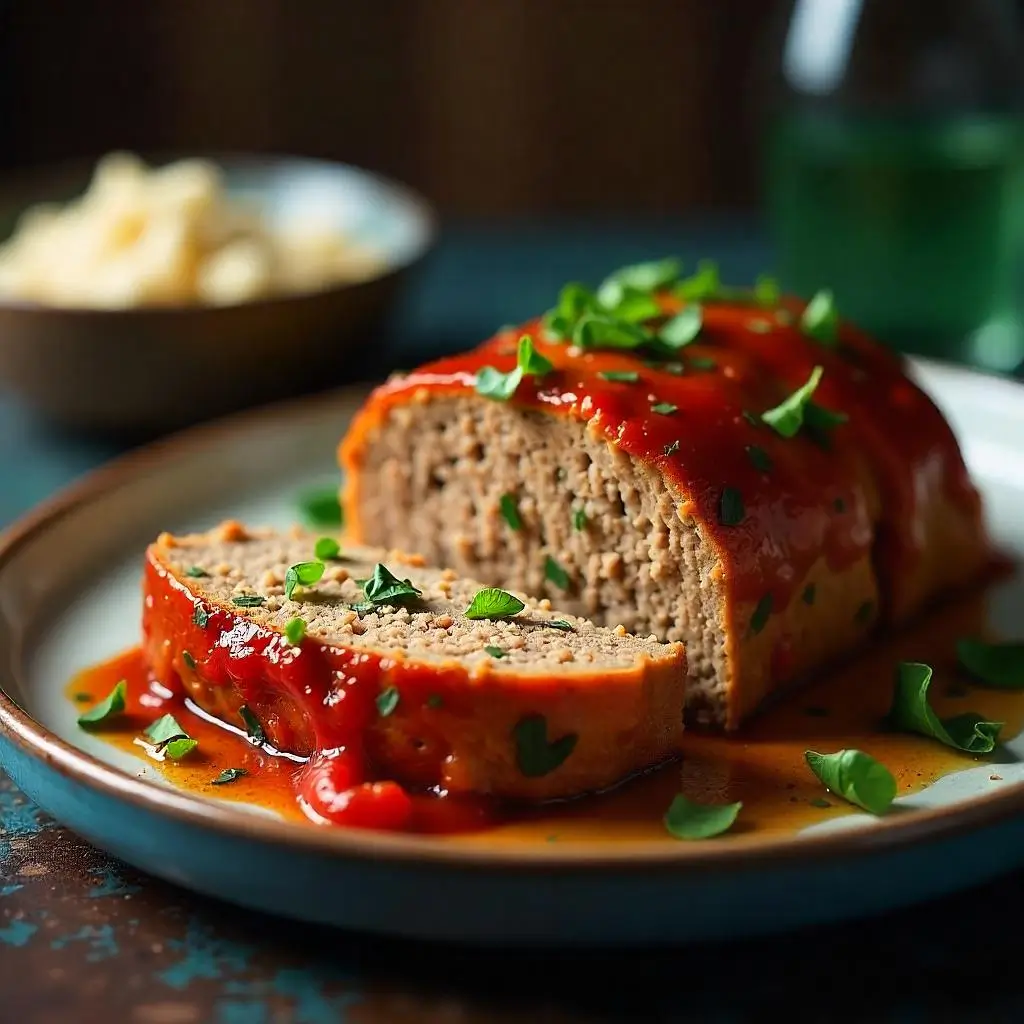
What Makes This Italian Meatloaf Recipe Special
Unlike traditional meatloaf, this Italian version transforms your ordinary dinner into something extraordinary. Moreover, think of it as a giant meatball that’s been scaled up to feed the entire family. In fact, this approach creates a dish that’s both familiar and exciting at the same time.
The secret lies in the combination of Italian-style ingredients that work harmoniously together. Furthermore, the use of marinara sauce, Italian bread crumbs, and fresh Parmesan cheese elevates this dish beyond the typical weeknight meal. Additionally, the cooking method ensures that every bite is packed with flavor while maintaining the perfect texture.
Essential Ingredients for Perfect Italian Meatloaf
Creating exceptional Italian meatloaf starts with selecting the right ingredients. Additionally, each component plays a crucial role in developing the final flavor profile.
The vegetable base consists of onion, carrot, celery, and garlic – a combination that provides both flavor and moisture. Moreover, these vegetables create the aromatic foundation that makes this dish so appealing. Similarly, sautéing them in olive oil releases their natural sweetness and creates depth.
The protein mixture typically combines 85% lean ground beef with ground pork, though many stores sell pre-made meatloaf mix. Furthermore, this combination provides the perfect balance of flavor and fat content. Additionally, the pork adds richness while the beef contributes substantial texture.
Italian-style bread crumbs serve as both binding agent and flavor enhancer. Moreover, these seasoned crumbs absorb moisture while adding authentic Italian taste. Similarly, freshly grated Parmigiano-Reggiano cheese contributes umami depth that elevates every bite.
The marinara sauce component serves double duty in this recipe. Initially, it’s mixed into the meat mixture for internal flavor. Subsequently, more sauce tops the meatloaf during cooking, creating that signature glazed appearance.
Step-by-Step Instructions for Italian Meatloaf Success
Beginning with proper preparation sets the stage for success. Therefore, preheat your oven to 350°F and prepare a rimmed baking sheet. Additionally, this free-form cooking method allows excess fat to drain away while creating a beautiful crust.
Start by processing your vegetables until finely chopped but not pureed. Next, sauté them in olive oil until softened, approximately 5-7 minutes. Furthermore, allowing them to cool prevents the eggs from cooking prematurely when mixed.
Meanwhile, whisk together eggs, Worcestershire sauce, fresh basil, salt, and pepper in a large bowl. Subsequently, add the cooled vegetables, ground meat, Italian bread crumbs, and Parmesan cheese. Moreover, mixing by hand ensures you don’t overwork the meat, keeping the texture tender.
Shape the mixture into a free-form loaf approximately 9×5 inches on your prepared baking sheet. Then, spread marinara sauce over the top, allowing some to drip down the sides. This technique creates that classic meatloaf marinara appearance that’s so visually appealing.
Bake for 65-70 minutes until the internal temperature reaches 160°F. Furthermore, using a meat thermometer ensures perfect doneness every time. Allow the meatloaf to rest for about 10 minutes before slicing, which helps the juices redistribute throughout.
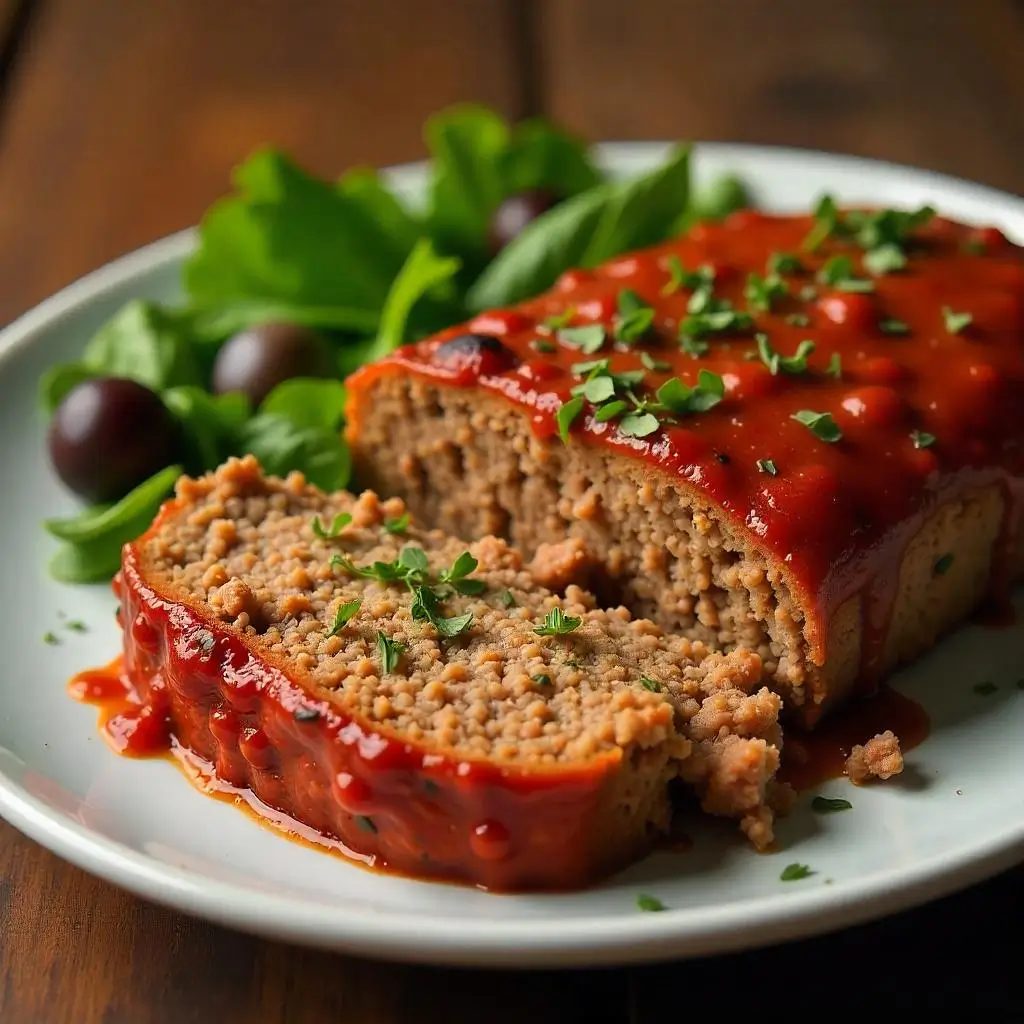
Freezer-Friendly Options for Meal Planning
This Italian meatloaf recipe shines when it comes to meal preparation flexibility. Moreover, both cooked and uncooked versions freeze beautifully for future meals.
For cooked meatloaf, cool completely before wrapping tightly and freezing for up to three months. Additionally, thaw overnight in the refrigerator before reheating at 300°F. This gentle reheating preserves both texture and flavor.
Alternatively, you can freeze the shaped raw meatloaf for up to two months. However, add the marinara sauce topping only after thawing to prevent sogginess. Furthermore, this approach gives you the satisfaction of freshly baked meatloaf with minimal effort.
Perfect Pairings and Serving Suggestions
Italian meatloaf pairs wonderfully with various side dishes that complement its rich flavors. For instance, a large Italian salad provides fresh contrast to the hearty main dish. Additionally, the crisp vegetables and tangy vinaigrette cleanse the palate between bites.
Parmesan-crusted potatoes offer another excellent accompaniment. Moreover, their creamy interior and crispy exterior echo the meatloaf’s texture contrasts. Similarly, creamy polenta or pasta creates a satisfying, restaurant-quality meal at home.
Don’t overlook leftover possibilities either. Furthermore, thick slices make incredible sandwiches, especially when topped with melted cheese. Additionally, cold meatloaf can be diced and added to pasta salads or grain bowls for quick lunches.
Professional Tips for Perfect Results
Achieving consistently excellent Italian meatloaf requires attention to several key details. Furthermore, these professional techniques ensure success every time you make this recipe.
Mixing Techniques
Overmixing creates tough, dense meatloaf that lacks the desired tender texture. Therefore, mix ingredients just until combined using clean hands or a large spoon. Additionally, wet your hands slightly to prevent sticking while handling the mixture.
The vegetables must be cooled completely before mixing to prevent cooking the eggs prematurely. Moreover, this step ensures even distribution throughout the mixture. Similarly, breaking up any large chunks of meat before mixing creates uniform texture.
Shaping and Cooking Tips
Free-form shaping on a rimmed baking sheet allows fat to drain away, creating a better texture. Furthermore, this method promotes even browning on all sides. Additionally, leaving space around the meatloaf ensures proper air circulation.
Don’t skip the resting period after cooking. Moreover, this allows juices to redistribute, preventing them from running out when sliced. Additionally, removing excess fat from the pan before slicing improves presentation and reduces greasiness.
Temperature and Timing
Using a meat thermometer eliminates guesswork and ensures food safety. Furthermore, the internal temperature should reach exactly 160°F for ground beef mixtures. Additionally, checking temperature in the thickest part provides the most accurate reading.
Cooking times vary based on meatloaf thickness and oven accuracy. Therefore, start checking temperature at 60 minutes, then every 5 minutes until done. Moreover, covering with foil during the last 15 minutes prevents over-browning if needed.
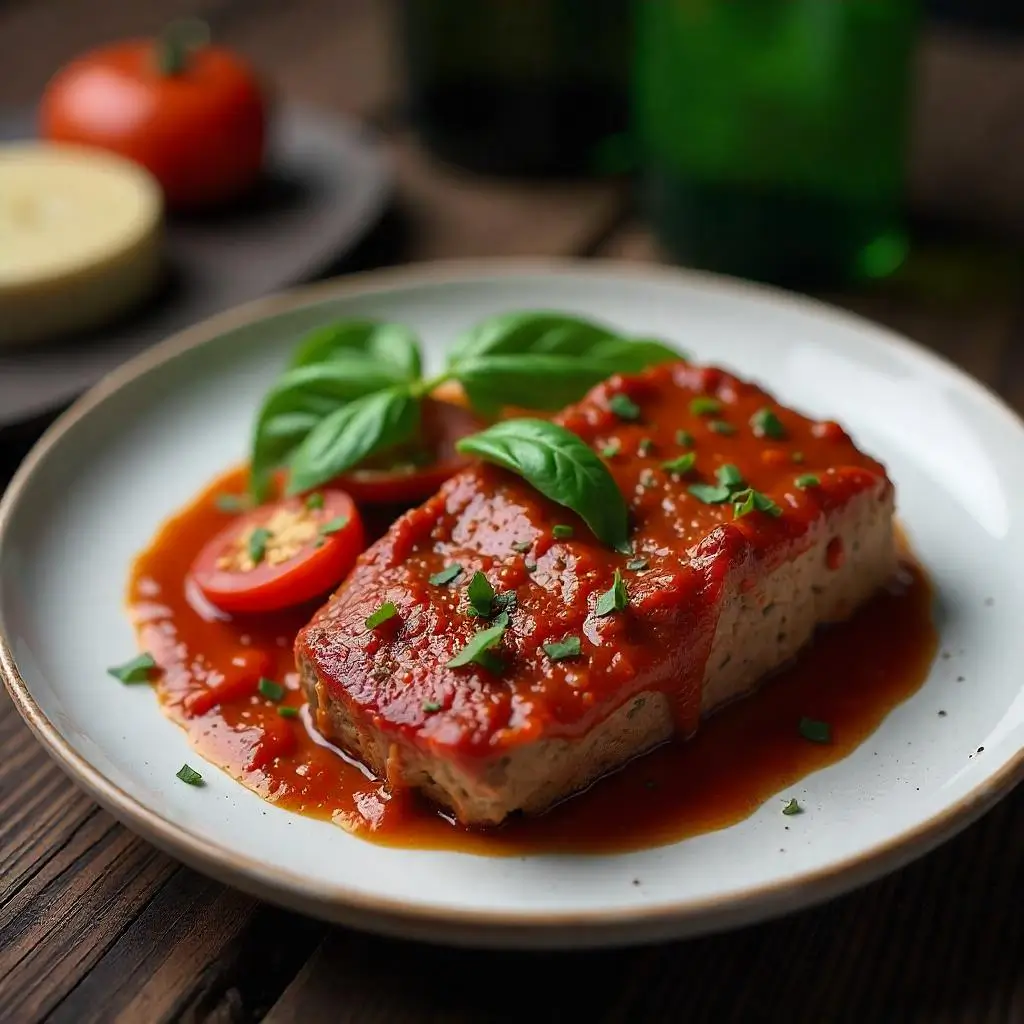
Creative Variations to Customize Your Meatloaf
This versatile Italian meatloaf recipe adapts beautifully to different dietary preferences and flavor profiles. Furthermore, these variations maintain the core Italian identity while offering exciting new possibilities.
Protein Variations
Ground turkey creates a leaner alternative while maintaining excellent flavor. Additionally, combining turkey with Italian sausage (removed from casings) adds extra spice and authenticity. Similarly, a mixture of ground veal, pork, and beef creates an ultra-rich version that’s restaurant-quality.
For a healthier approach, substitute half the meat with finely chopped mushrooms or lentils. Moreover, this modification reduces calories while increasing fiber content. Additionally, the umami from mushrooms enhances the overall flavor profile.
Flavor Enhancement Options
Fresh herbs transform this recipe into something extraordinary. Furthermore, adding chopped fresh oregano, thyme, or rosemary alongside the basil creates complex Mediterranean flavors. Additionally, sun-dried tomatoes (chopped fine) provide concentrated tomato flavor and chewy texture contrast.
Cheese variations offer another customization avenue. Therefore, try mixing in ricotta cheese for extra creaminess, or substitute Romano for a sharper flavor. Moreover, adding a layer of mozzarella in the center creates a surprise cheese pull that delights everyone.
Vegetable Additions
Roasted red peppers add sweetness and beautiful color throughout the meatloaf. Similarly, finely diced zucchini increases moisture while boosting nutritional value. Additionally, spinach (squeezed dry) provides iron and creates attractive green flecks.
For extra Mediterranean flair, incorporate chopped olives or capers. Furthermore, these ingredients add briny complexity that pairs perfectly with the marinara sauce. However, reduce added salt when using these naturally salty ingredients.
Complete Storage and Meal Prep Guide
Proper storage techniques ensure your Italian meatloaf maintains quality and safety while maximizing convenience. Moreover, understanding these methods helps you plan multiple meals from one cooking session.
Refrigerator Storage
Cooked Italian meatloaf stays fresh in the refrigerator for 3-4 days when properly stored. Furthermore, wrap individual portions in plastic wrap or store in airtight containers. Additionally, keeping slices separate prevents them from sticking together and makes reheating easier.
Leftover meatloaf actually improves in flavor after a day as the seasonings continue to meld. Therefore, many home cooks prefer making it ahead for special occasions. Moreover, cold meatloaf slices perfectly for sandwiches without crumbling.
Freezing Techniques
Both cooked and uncooked meatloaf freeze exceptionally well with proper technique. Furthermore, this flexibility makes it perfect for batch cooking and meal preparation.
For cooked meatloaf, cool completely before wrapping tightly in plastic wrap, then aluminum foil. Additionally, label with the date and contents for easy identification. Moreover, individual portions thaw faster and prevent waste.
Uncooked meatloaf can be shaped and frozen on the baking sheet until solid, then wrapped for storage. Furthermore, this method prevents the shape from becoming distorted. Additionally, freeze the marinara sauce separately to prevent sogginess during thawing.
Reheating Methods
Gentle reheating preserves the meatloaf’s texture and prevents drying out. Therefore, use low temperatures and add moisture when necessary. Moreover, different methods work better for different serving sizes.
For whole meatloaf, thaw overnight in the refrigerator, then reheat at 300°F covered with foil. Additionally, adding a splash of beef broth or additional marinara sauce prevents drying. Similarly, individual slices reheat beautifully in the microwave with a damp paper towel covering.
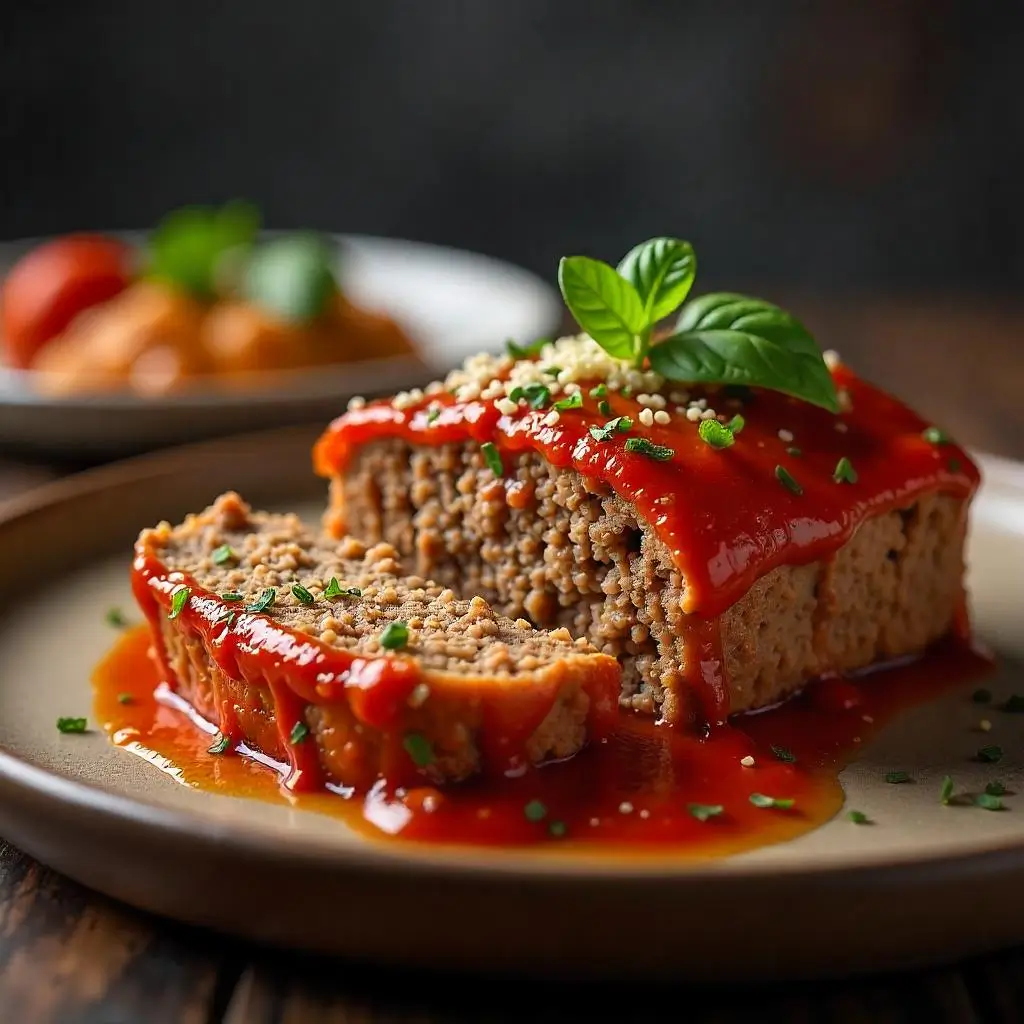
Comprehensive Nutrition Information
Understanding the nutritional profile of this Italian meatloaf helps you make informed meal planning decisions. Furthermore, each serving (based on 6 portions) provides approximately:
- Calories: 380-420 per serving
- Protein: 28-32 grams
- Total Fat: 22-26 grams
- Saturated Fat: 8-10 grams
- Carbohydrates: 18-22 grams
- Dietary Fiber: 2-3 grams
- Sodium: 850-950 milligrams
- Cholesterol: 95-110 milligrams
Additionally, this recipe provides excellent sources of iron, vitamin B12, and zinc from the meat. Moreover, the vegetable base contributes vitamin A, vitamin C, and folate. The Parmesan cheese adds calcium and additional protein to support bone health.
Other recipe :
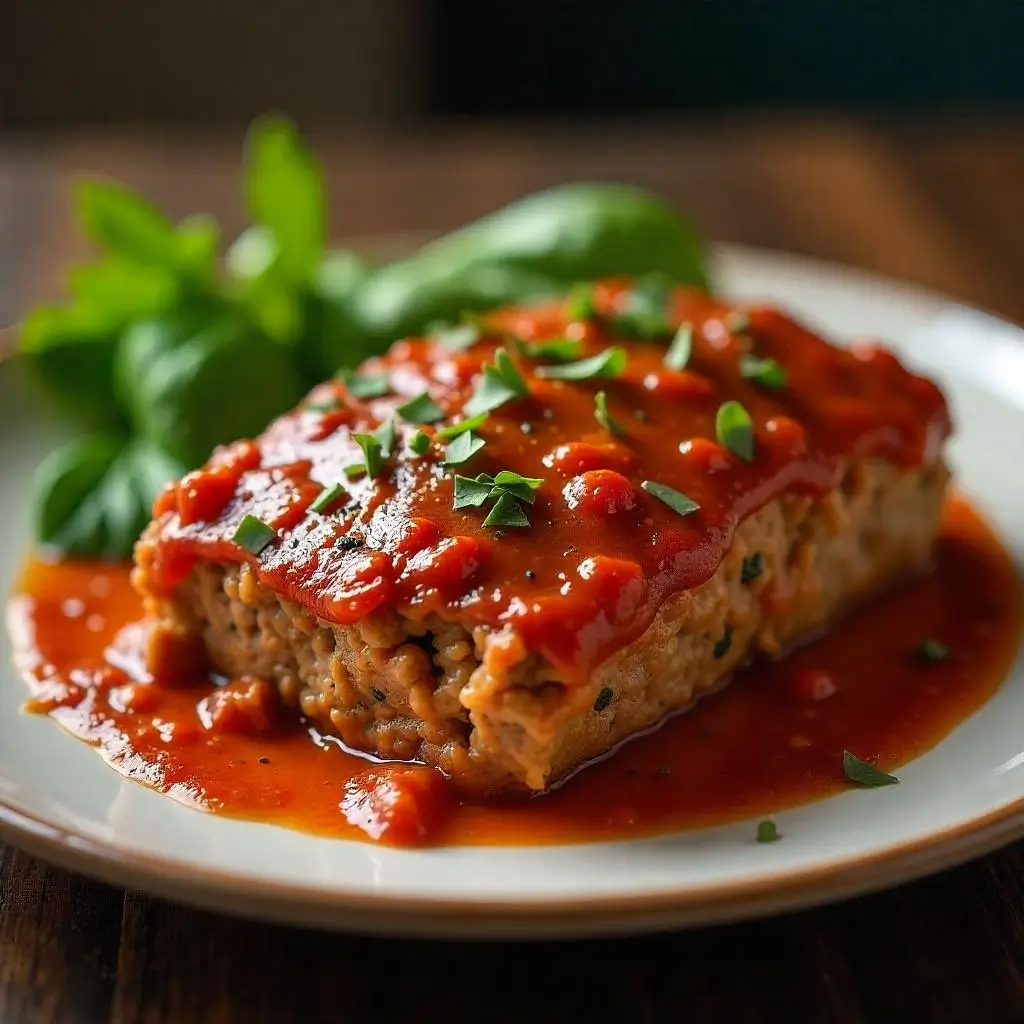
This Italian meatloaf recipe proves that comfort food doesn’t have to be complicated or time-consuming. Furthermore, the combination of familiar techniques with bold Italian flavors creates something truly special. Additionally, the make-ahead and freezer-friendly aspects make it perfect for busy families.
Whether you’re serving it fresh from the oven or enjoying leftovers the next day, this Italian meatloaf delivers satisfaction in every bite. Moreover, the recipe’s flexibility allows you to adapt it to your family’s preferences while maintaining its essential character. Ultimately, this dish transforms an ordinary weeknight into something memorable, bringing everyone together around the dinner table.
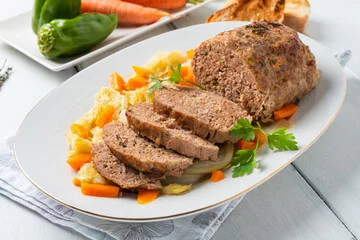
How to Make the Best Italian Meatloaf at Home
Description
Learn how to make the best Italian meatloaf at home with this easy recipe! Packed with herbs, cheese, and marinara sauce for a delicious and hearty meal.
Ingredients
For the Vegetable Base:
For the Meat Mixture:
Instructions
- Preheat oven to 350°F (175°C)
- Line a rimmed baking sheet with parchment paper
- Using a food processor, pulse onion, carrot, and celery until finely chopped (not pureed)
- Heat olive oil in a large skillet over medium heat
- Add chopped vegetables and garlic, cook 5-7 minutes until softened
- Remove from heat and let cool completely
- In a large bowl, whisk together eggs, Worcestershire sauce, basil, salt, and pepper
- Add ground beef, ground pork, Italian bread crumbs, Parmesan cheese, ½ cup marinara sauce, and cooled vegetables
- Mix gently with hands until just combined (don’t overmix)
- Shape mixture into a free-form loaf (approximately 9×5 inches) on prepared baking sheet
- Spread remaining marinara sauce over top, letting some drip down sides
- Bake 65-70 minutes until internal temperature reaches 160°F (71°C)
- Let rest 10 minutes before slicing
- Remove excess fat from around meatloaf
- Slice and serve with additional warm marinara sauce
Step 1: Prepare & Preheat
Step 2: Prepare Vegetables
Step 3: Mix the Meatloaf
Step 4: Shape & Bake
Step 5: Serve
Notes
- This Italian meatloaf recipe brings a flavorful twist to the classic comfort food. Made with ground beef, Italian herbs, parmesan cheese, and marinara sauce, it’s perfect for family dinners or meal prep. Serve it with pasta or roasted vegetables for a complete, satisfying meal .
